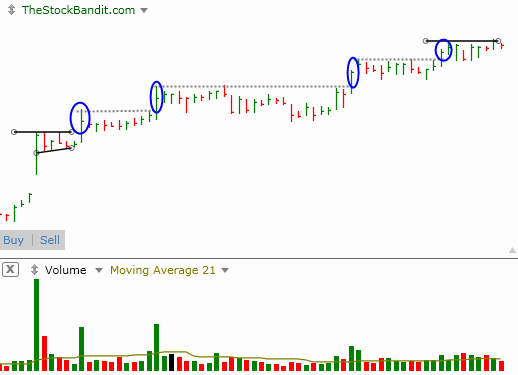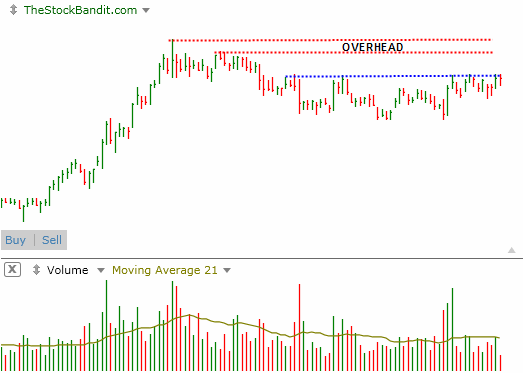Probably the single most-often asked question of me pertains to determining the timeframe for a trade. Once you find a quality chart pattern, how do you decide whether to take it for a swing trade or a day trade?
I never hesitate to provide an answer to this because it’s such a great question and one that every trader faces. Of course there’s no right or wrong way to determine this, but for me there are a few things which play a role in my decision.
First and foremost, anytime the market is generally choppy, I’m less-inclined to initiate new swing trades (multi-day trades). As a result, during those times I’ll usually shorten my timeframe and go with intraday trades as a preferred timeframe.
When it boils down to just the charts though, for me it comes down to 2 major elements.
Quality of the Base
If the base isn’t quite completed or it looks like it needs more work, I’ll take the trade for a single-day play rather than a multi-day swing. For example, an ascending triangle which isn’t yet completed (needs tightening) will entail a much wider stop loss. In that type of situation, I’d prefer to participate in the initial breakout rather than hold for a larger move that may involve substantially more risk.
The history of the stock also plays a role here. If XYZ has in recent months proven able to generate good follow-through from similar patterns, I’ll go with it for a swing. However, if it tends to be a 1-day wonder type of stock, I’ll usually opt for the single-day play.
Here’s an example of a stock with a recent history of making 1-day moves as it clears key levels, making it better-suited for single-day plays rather than tying up capital for days or weeks at a time without reason to expect movement:
Potential for a Sizeable Move Relatively Quickly
I want my capital tied up as briefly as necessary in order to get paid for the risk I’m taking. So a sluggish stock has less appeal to me, knowing that I’ll have that capital committed for a potentially longer period of time and for a potentially smaller reward.
Additionally, if there’s resistance (key levels or prior relative highs) not far above the base in question, I’ll likely lean toward a single-day trade timeframe and just aim to capture the initial breakout. Here’s an example of that with price challenging a recent level (blue) and a pair of prior levels (red) not far beyond which could interfere with lasting progress on the upside:
For those who are able to watch the market intraday, single-day plays can prove supplemental as a cash-flow strategy. Risk can be managed closely for those who aren’t prone to gambling or overtrading. Intraday strategies can also provide the best approach during times of extreme volatility, when overnight gaps are happening frequently, or when high levels of cash are being maintained on an overnight basis.
Swing trading and position trading can tack on big gains quickly in an account when times are good, but having the flexibility to operate on multiple timeframes is an excellent way to diversify as a trader.
Finally, it’s imperative to understand the timeframe you most favor and seek to operate primarily on that timeframe. If that’s intraday, do it. If that’s on a multi-day basis or a multi-month basis, do it. Know which style you favor and which style favors you, and aim to make the bulk of your trades on that timeframe. At the end of the day, we must all trade in accordance with what we’re comfortable with, and that’s something that only you can answer.
Related Posts:
Trading Timeframe Influences Position Size
Trading Roadblocks
Trade Like a Bandit!
Jeff White
Take a trial to my Stock Pick Service to get my trades.












